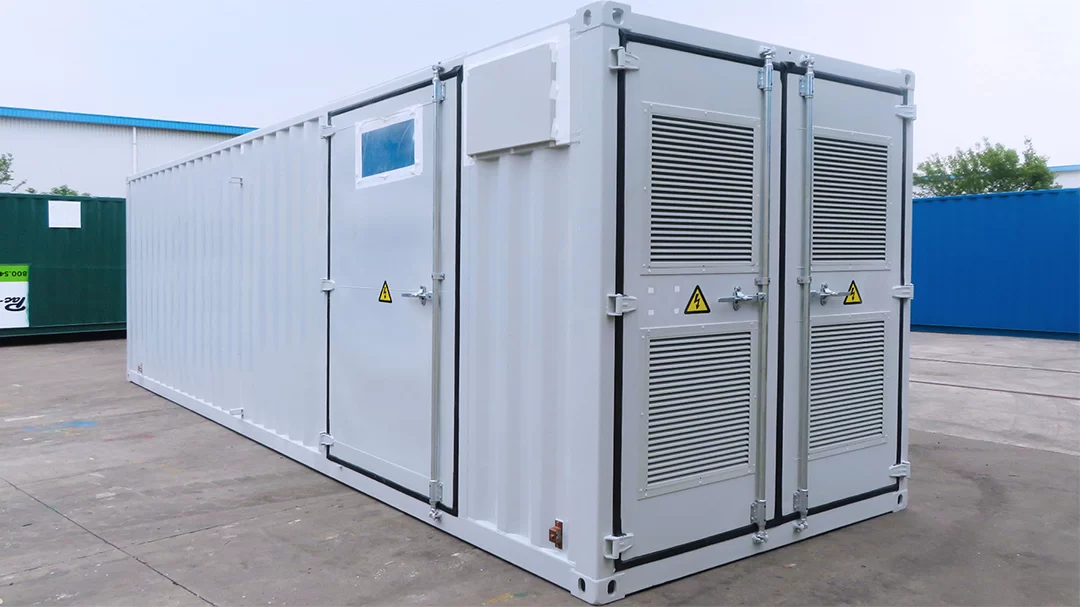Environmental-Friendly Design and Materials of Energy Storage Containers

Under the global backdrop of actively responding to climate change and pursuing sustainable development, energy storage containers, as key facilities in the energy storage field, the selection of their environmental-friendly design and materials has become an important research direction and practical area.
The environmental-friendly innovation of energy storage containers is first reflected in the meticulous selection of materials. Renewable materials such as bamboo and hemp fibers, due to their rapid growth, abundant resources, and renewable characteristics, are gradually being applied in the manufacturing of containers. These materials not only have good strength and durability but can also naturally degrade at the end of their life cycle, reducing the long-term impact on the environment. The use of recyclable materials such as recycled aluminum and recycled steel is also increasing. These materials, after recycling and reprocessing, still have excellent performance, greatly reducing the demand for new ore mining and smelting, and reducing energy consumption and environmental pollution.
In terms of the design of the heat dissipation system, innovative measures are emerging one after another. The traditional air-cooled heat dissipation method is gradually being replaced by a more efficient liquid-cooled heat dissipation system. Through the circulation of liquid in the pipeline, liquid cooling can absorb and remove heat more quickly and evenly, thereby greatly improving the heat dissipation efficiency. This not only reduces the energy consumed to maintain the normal operating temperature of the battery but also reduces the operating noise of heat dissipation equipment such as fans. In addition, the application of intelligent temperature control systems also makes heat dissipation more precise and energy-saving. By monitoring the battery temperature and working status in real-time, and intelligently adjusting the operating power of the heat dissipation system, unnecessary energy consumption waste is avoided.
The shell design of the container also incorporates environmental-friendly concepts. The use of materials with good heat insulation performance, such as vacuum insulation panels or aerogels, can effectively reduce the influence of external temperature on the internal batteries and reduce the usage frequency of temperature control equipment such as air conditioners. At the same time, coating the shell surface with a layer that reflects sunlight can reduce the heat absorption of the container under the sun, further lowering the internal temperature and thus reducing energy consumption.
The optimization of the internal layout is also an important part of the environmental-friendly design. By rationally planning the arrangement of battery packs and the routing of cables, space waste is reduced and energy density is increased. The adoption of lightweight structural design reduces the overall weight of the container under the premise of ensuring strength and safety, lowering the energy consumption during transportation and installation.
In the selection of sealing materials, environmental-friendly silicone and rubber materials have replaced traditional chemically synthesized sealants. These materials not only have good sealing performance but also do not release harmful gases, being more friendly to the environment and human health.
In addition, the environmental-friendly design of energy storage containers also considers the entire life cycle. During the manufacturing process, clean production processes are adopted to reduce the discharge of wastewater, waste gas, and waste residue. In the scrapping stage, a structure that is easy to disassemble and recycle is designed, enabling the various components of the container to be effectively separated and recycled to maximize the recycling of resources.
To sum up, the environmental-friendly innovation in the design and material selection ofcontainers is multi-faceted and comprehensive. These innovations not only help reduce the environmental burden during the energy storage process and improve energy utilization efficiency but also provide strong support for promoting the green development of the entire energy industry. With the continuous advancement of technology and increasingly strict environmental protection requirements, it is believed that the environmental-friendly design of energy storage containers will continue to be improved and developed, playing a more significant role in building a clean, low-carbon, and sustainable energy future.
